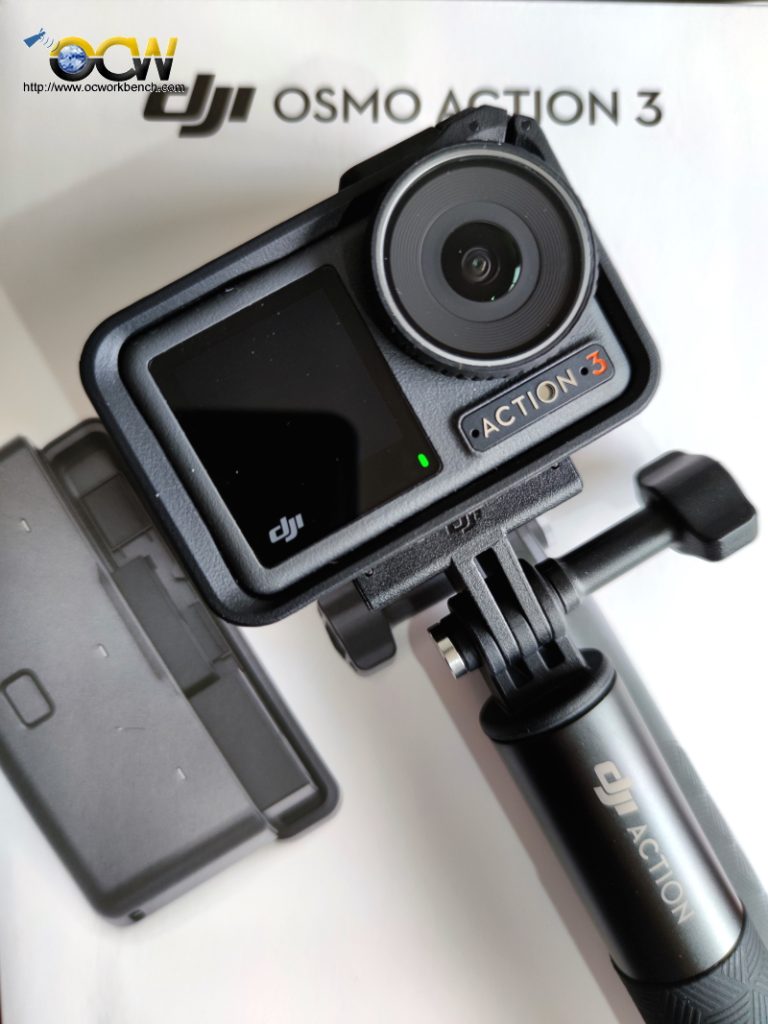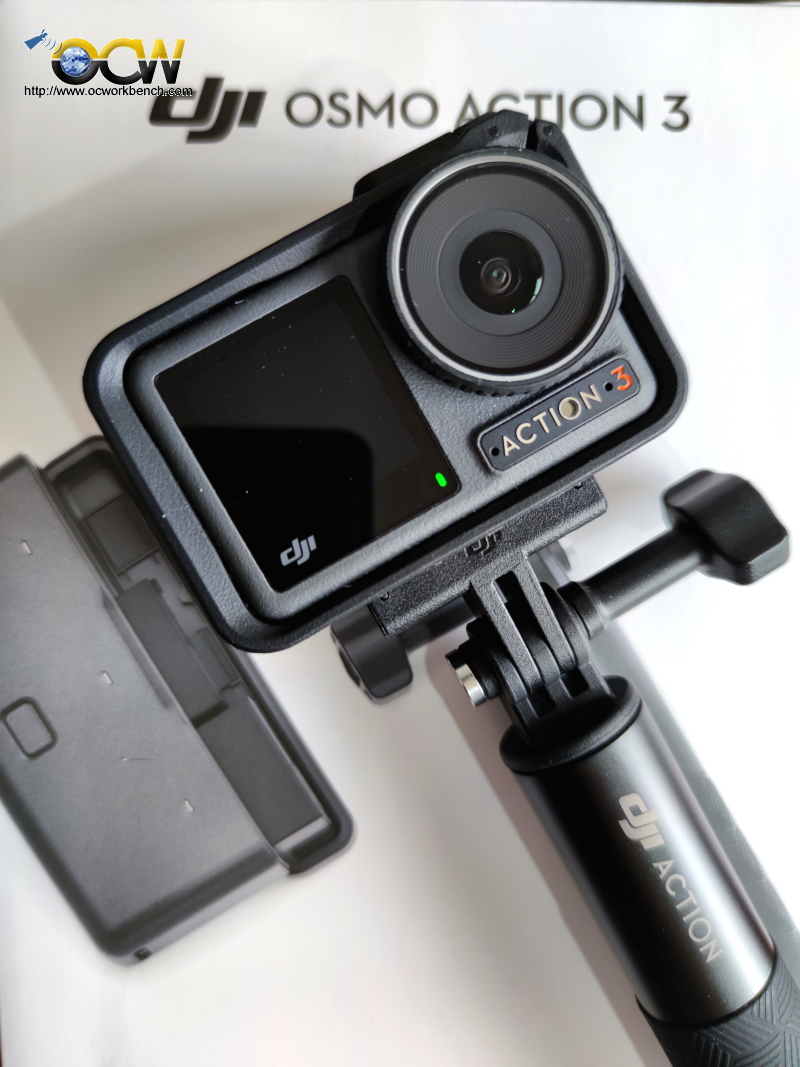Intro
Contents
A couple of months ago, we reviewed the DJI action 2, we were impressed with the video quality other than the shortcomings of overheating issues and short recording time
In DJI Osmo Action 3, it now merged the two seperated components – the front and back into a singular module. It also has a removable battery pack.
In the Action 2, there was on board memory, but on the Osmo Action 3, you will need to seperately purchase a UHS-I Speed Grade 3 or V30 class microSD card if you intend to record in 4K.
Similar to the previous generation, it can record up to 4K/120fps & Super-Wide FOV. It supports the HorizonSteady, HorizonBalance modes.

Now the differences and improvements. The DJI OSMO Action 3 is now 16m Waterproof compared to 10m of the DJI action 2. There is also a Quick-Release Vertical Mount and Dual Touch screen.
It now has 3 microphones instead of just 1 on the Action 2 power Combo, It has a larger LCD touch screen compared to a smaller OLED on the former.
As for the camera, the sensor remains at 1/1.7″ CMOS , 12 MP and FOV of 155 Degrees, aperture of f/2.8, it has a better ISO range for photos and video of up to 12800, DJI action2 was up to 6400. The shooting modes for photos and video remains unchanged. You can shoot up to 4K at 120 fps.
Stabilisation is the same except that it now comes with Rocksteady 3.0. Horizon Balancing and HorzonSteady are the same as the previous generation.
The operating time is now rated at 160 minutes recording in 1080p/30fps with EIS disabled and screen off. This is almost doubled of what you can achieve on the DJI action 2 at 70 minutes. This is due to the larger battery. In fact the DJi action 2 dual screen combo is rated 160 minutes too.
Charging time is improved to 49 minutes as compared to the previous generation requiring 37 minutes for camera unit or 90 minutes for both camera unit and power module.
